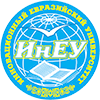Annotation:
Currently, there is a sharp surge in artificial intelligence (AI) technologies, which are
beginning to be used everywhere in almost all fields of activity. At the same time, when talking about
using AI, people's main fear is that it will trigger a cascade of layoffs, as the robot copes with its tasks
better and more accurately. This article examines the impact of artificial intelligence on the modern
economy in this and other aspects.
To conduct an analysis on the impact of AI on the modern economy, GDP, productivity, and
unemployment rate. To consider the issue at both the microeconomic and macroeconomic levels.
Collecting macroeconomic statistics, the level of investments in this sector, exploring the
possibilities of using AI. The ratio of the data obtained and their interpretation to obtain a picture of
what is happening in the economy.
The analysis shows that at the moment, despite all the big headlines, AI does not have any
significant impact on the global economy. It has brought a lot of benefits to individual organizations
and people, but at the same time it has not affected the reduction of jobs, which opponents of the
introduction of this technology are so afraid of. Moreover, AI is not even a small catalyst for
individual countries' GDP.
Year of release:
2024
Number of the journal:
4(96)
Heading: Economic sciences

 English
English Русский
Русский Қазақ
Қазақ